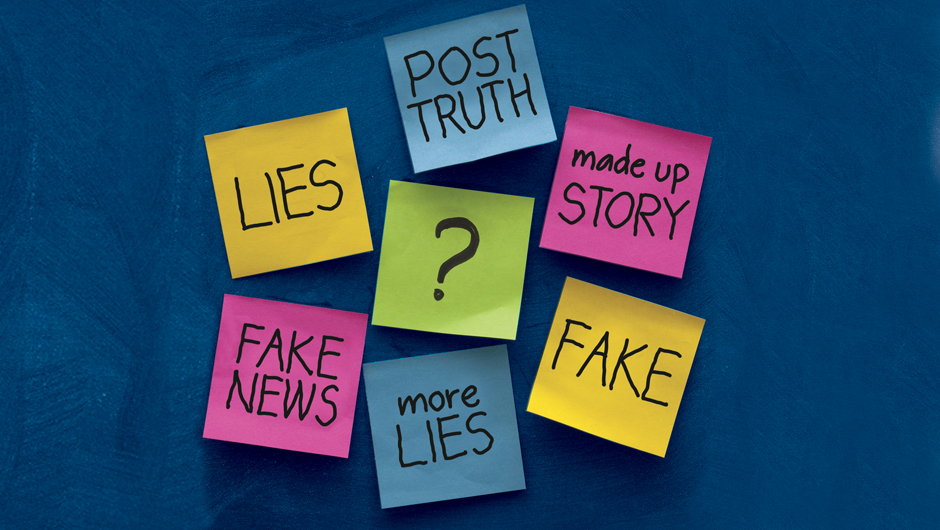A necessary controversy: Defining “fake news”

Two years after Trump’s inauguration, three years after the start of Duterte’s presidential campaign, the controversy over the use of the term “fake news” to refer to the most familiar form of disinformation continues.
But it is a necessary controversy. As Claire Wardle writes:“Definitions and terminology matter. For the policy-makers, technology companies, politicians, journalists, librarians, educators, academics, and civil society organizations all wrestling with the challenges posed by information disorder, agreeing to a shared vocabulary is essential.”
The main objection to the use of “fake news” as a term is that it has now morphed into a phrase that can mean anything. Using it is an act of dismissal. (See, “Open letter to Grace Poe on ‘fake news’,” in the Philippine Daily Inquirer; January 30, 2018.) Weaponized by Donald Trump, the term has become such a common phrase it is now practically useless: If anything can be ‘fake news,’ everything can be ‘fake news.’ The phrase is transitioning from insult to cliché to punch line.”
The pushback against the use of “fake news” also comes in the form of a consistent refusal to accept the term. In this view, the term does not make sense, because the two words cancel each other out. In other words, it’s an oxymoron. If the news is a report about an event, then a false report cannot be considered as a type of news. “After all, news is generally defined as information or reports of recent or previously unknown events, which means it has to be true,” a primer for Singapore’s The Strait Times reads.
But this point of view rests on a category error. The term “fake news” does not in fact refer to false reports as a category of news; rather, it refers to deliberately false information that pretends to be news. “Fake news” is not a subset of the news; it is an entirely different universe, consisting precisely of made-up news.
The analogy to a fake Rolex that one can buy off the street may be instructive. No one who knows the circumstances will assert that the fake Rolex is a type or subset of Rolex watches; that would be a basic logical mistake. Rather, the fake watch represents the antithesis of the genuine Rolex.
That is what “fake news” is—not a type of news, but precisely the opposite of what the news is.
Fake news has a real meaning - deliberately constructed lies, in the form of news articles, meant to mislead the public.

There is another reservation against the use of the term: the principled refusal to use a concept and a name that, whether deliberately or not, devalues journalism. The Google News Lab lead for Asia Pacific, Irene Jay Liu, once offered an eloquent defense at a forum. “I choose not to incorporate ‘news’ in discussing misinformation, disinformation, propaganda and satire,” the former journalist said, “because this term doesn’t have any meaning and it also defames journalism. It is not news—it is just incorrect information.”
A well-known statement from Frank La Rue, an assistant director general at UNESCO, makes the same argument.”’Fake news’ is a bad term primary because it is a trap. It is not news. Just the term generates mistrust of the press and of the work of journalists. Political leaders have started using the term against the press, which is especially serious. This is a crucial moment when we have to defend journalism. We have to promote a journalism of honesty, a journalism that is seen to build the truth.”
These well-meaning explanations are an example of the first reservation against the use of “fake news” as a term, that it can be used to mean anything, but it also illustrates a concern that preoccupy those invested in a healthy public sphere. The very term helps undermine the entire news-gathering and news dissemination enterprise.
This is a reality that journalists cannot escape from. When anything false that isn’t even remotely related to the news—such as an actor’s surgically enhanced face—is described as “fake news,” the real meaning of the term is not only rendered irrelevant; the meaninglessness of the use of the term also damages the news undertaking itself. It may be that each such use inflicts only an insignificant amount of damage on public perceptions of the value of journalism and on the profession’s credibility, but cumulatively, the consequences may well add up to something serious.
But defining a problem is a necessary step towards understanding it.
When it refers to falsehood masquerading as news, the phrase represents an insidious danger to both the democratic project and the discourse that sustains it. It must be properly defined. Margaret Sullivan of the Washington Post has a spare, elegant definition: “deliberately constructed lies, in the form of news articles, meant to mislead the public.” For our purposes, the so-called 3-D formula is accurate and adequate: “It is a deliberate act of fabrication and manipulation; disguised to look, sound, feel like the news; designed to deceive.”
A briefer on the issue of fake news, written by John Nery, is available here.
-
Democracy Decay and Disinformation in the Digital Age